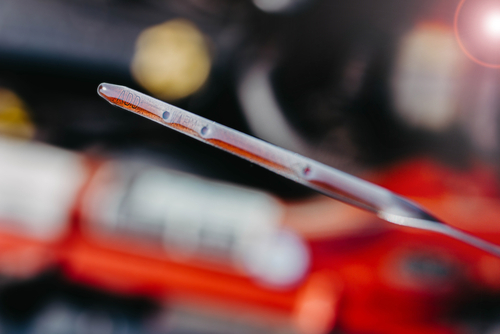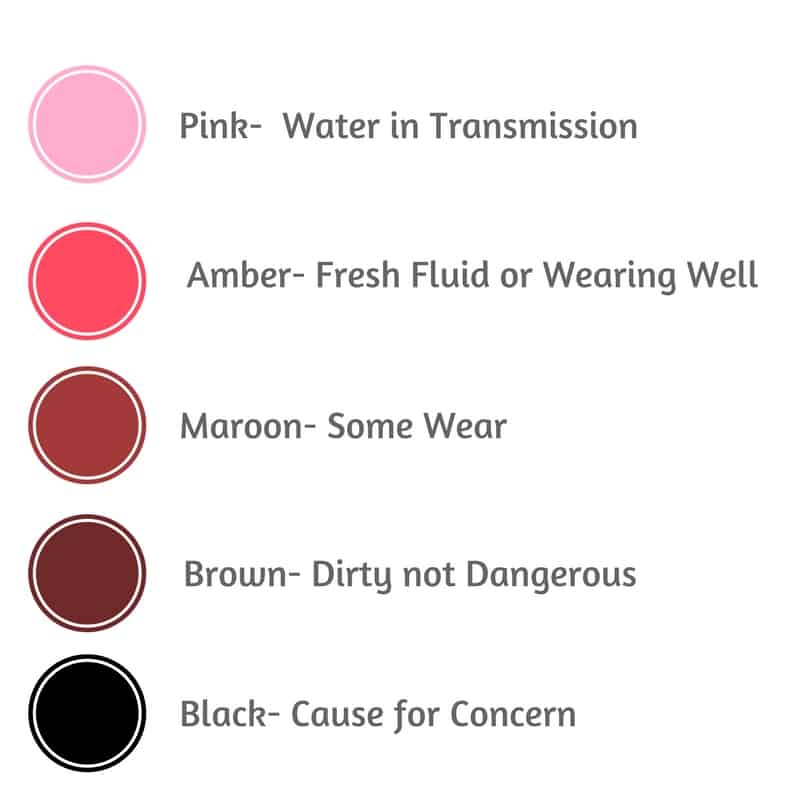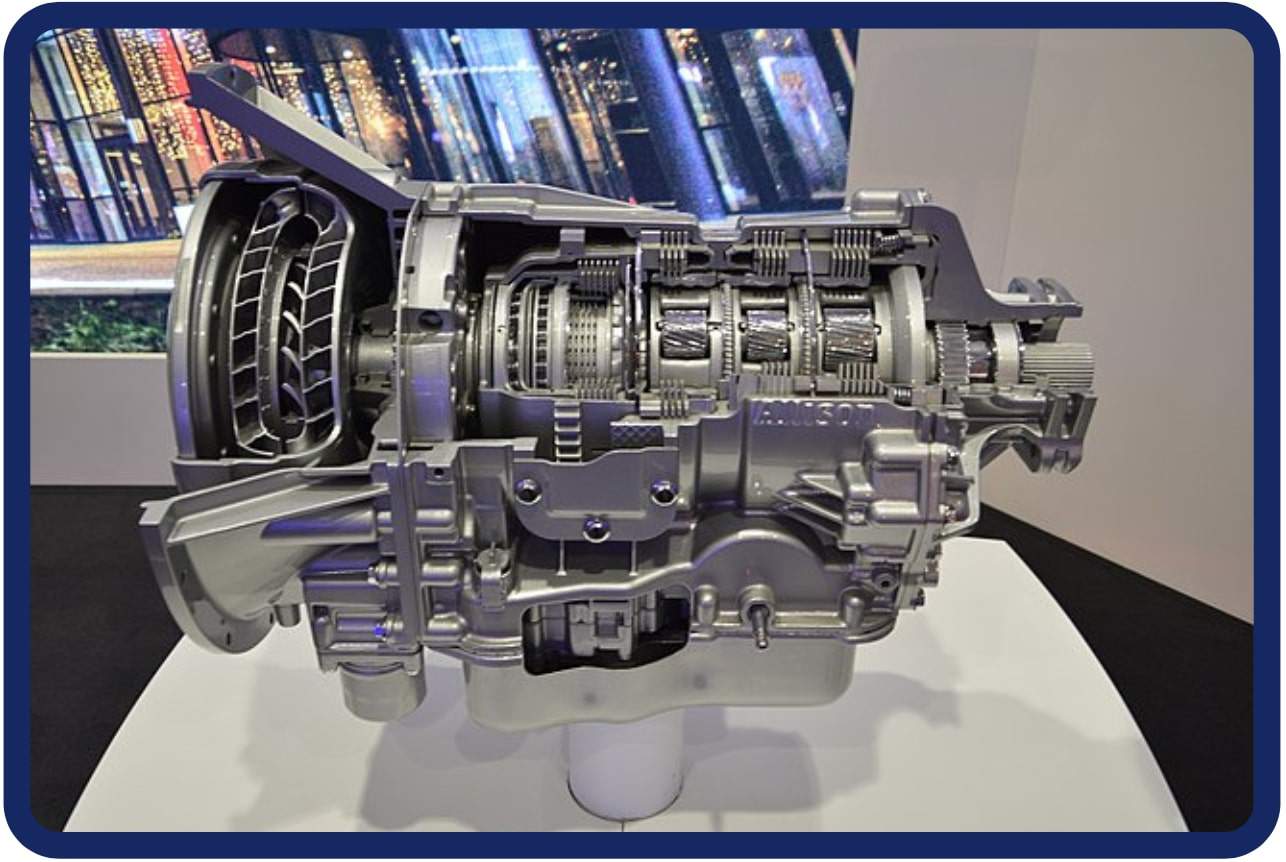One of the most common automatic transmission problems is shifting hard. If your Dodge Neon has a hard shifting transmission, it can be uncomfortable to drive and a sign of serious problems.
If your car’s transmission is shifting hard, it can cause a harsh ride and lead to potential damage over time.

Numerous factors can contribute to your Dodge Neon’s transmission shifting hard, jerking, or hesitating. The most common reasons for this problem are poor fluid levels and depleted fluid frictional properties (old or burnt transmission fluid). We’ll dive into them and what to do about them directly below.
Common Causes of Hard Shifting
Start diagnosing your Neon’s hard shifting by checking the transmission fluid level.
1. Low Transmission Fluid

Low transmission fluid is one of the most frequent causes of hard shifting in the Dodge Neon. This can happen when the fluid becomes too low, causing the clutch and gears to grind due to a lack of lubrication.
Transmission fluid is responsible for the following
- cleaning
- lubricating
- sealing
- acting as a coolant
It does all of the tasks listed above while also providing the necessary hydraulic pressure for engaging gears. Ensuring that the fluid level is maintained and changed according to your Neon’s owner’s manual can help prevent complications related to hard shifting.
Inconsistent low levels may indicate a leak, which should be identified and fixed. If the fluid gets too low, it can cause your Neon’s transmission to slip.
Look under where you usually park your car. Is there a red stain anywhere? Look above it. The most common leak is from a transmission line.
How to Check Transmission Fluid
2. Check the Fluid For Signs of Wear

The transmission fluid itself may be causing your Neon to shift too hard. Transmission fluid that is worn out can cause harsh gear shifts and damage the synchros and clutches.
Checking your fluid can tell you a whole lot about the internal condition of your car’s transmission. Here’s a good article on using transmission fluid color to help determine what is going on with your Neon’s transmission.
If it is dark, burnt, or past the time that Dodge wants it changed, replacing the fluid may stop the transmission from shifting hard.
3. Worn or Damaged Components

Another reason for the Dodge Neon shifting hard could be damaged or worn internal components, such as the shaft seal or gasket, which, when they fail, can cause the transmission to leak fluid.
There are clutches, shift solenoids, bands, clutch packs, sensors, and more that must be in perfect working order for the transmission to shift smoothly. The problem is internal transmission problems are challenging to diagnose, and doing so under the vehicle with the pan off isn’t practical.
Depleted fluid frictional properties can contribute to a hard-shifting Dodge Neon. You may need to bring your car into a transmission shop.
Electronic or Software Issues

Hard shifting can also stem from electronic or software-related problems. A faulty shift solenoid, for example, can lead to hard or rough shifting, as well as gear sticking.
Warning lights may appear on the dashboard, alerting the driver to potential issues with the automatic transmission system. This is a good thing since the warning light will be accompanied by a scanner-accessible code which will tell you what’s failing inside your Neon’s transmission.
Honorable Mention: Bad Transmission or Motor Mounts
A transmission that is shifting fine can still feel “clunky” when it shifts if a motor or transmission mount is bad.
You can check your Neon’s mounts by having a buddy put the truck in and out of gear while you observe the engine and transmission. If they move a lot, that indicates that the play in the mounts is causing the clunking/hard shifting.
Signs of Transmission Problems
Delayed Shifts
Delayed shifts are a common sign of transmission problems. When your Dodge Neon takes longer than usual to shift between gears, it may indicate an issue with the transmission. This can be caused by low transmission fluid levels, a failing shift solenoid, or worn-out transmission oil filters.
Ensuring proper fluid levels and regular maintenance can help prevent delayed shifts.
Harsh or Jerky Shifts
Another sign of transmission problems in the Dodge Neon is harsh or jerky shifts between gears. Insufficient or leaking transmission fluid, a bad transmission vacuum modulator, a failed transmission sensor, or a faulty shifter cable can cause this.
Harsh shifts can also be a result of cold weather affecting the transmission’s performance. Regularly checking the fluid level and addressing other potential causes can help minimize the occurrence of harsh shifts.
Erratic Shifting Behavior
Erratic shifting behavior, such as a transmission slipping or getting stuck in gear, can indicate transmission issues. Potential causes for this behavior include a bad shift solenoid, a malfunctioning transmission sensor, or low fluid levels.
Maintenance and Preventing the Neon from Shifting Harsh
The best offense is a good defense. And with a vehicle, that means checking and changing fluids when it’s called for
Regular Fluid Inspections
It is crucial to perform regular fluid inspections to ensure the smooth functioning of your Neon’s transmission. Checking the transmission fluid level and quality assists in preventing hard shifting issues.
Low fluid levels can lead to overheating and inadequate hydraulic pressure required for gear engagement. Additionally, using the wrong or contaminated fluid may alter the fluid’s original color. In such cases, a flush is necessary to remove impurities and restore the transmission system’s efficiency.
By identifying these issues early and performing necessary repairs or replacements, you can minimize the odds of harsh shifting and prolong the life of your Neon’s transmission.
Professional Diagnosis and Repair
When faced with hard-shifting transmission issues, it is essential to seek professional diagnosis and repair (assuming you’ve checked your Dodge Neon’s transmission fluid). A transmission specialist can assess the situation, determine the root cause of the problem, and provide recommendations for fixing it.
